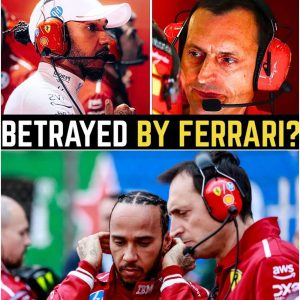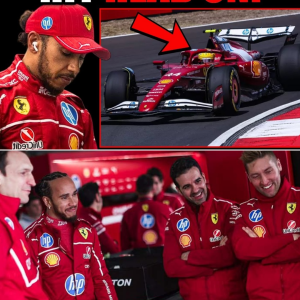It was supposed to be the return of a king—Lewis Hamilton, nine-time victor at Silverstone, back where he has conquered more than any other driver in history.
But this time, it wasn’t the cheers or champagne that defined his weekend. It was a downpour of disappointment, an unstable SF-25, and a bitter fourth-place finish that left the seven-time world champion questioning not just strategy—but Ferrari’s very DNA.
“It felt like déjà vu,” Hamilton admitted after the race, soaked in rain and frustration. His weekend at Silverstone was a chaotic symphony of torrential downpours, safety cars, and a car he bluntly described as “the most difficult I’ve ever driven here.”
And that wasn’t hyperbole. This wasn’t a man throwing a tantrum—this was the voice of a veteran seeing the warning signs that others refused to acknowledge.
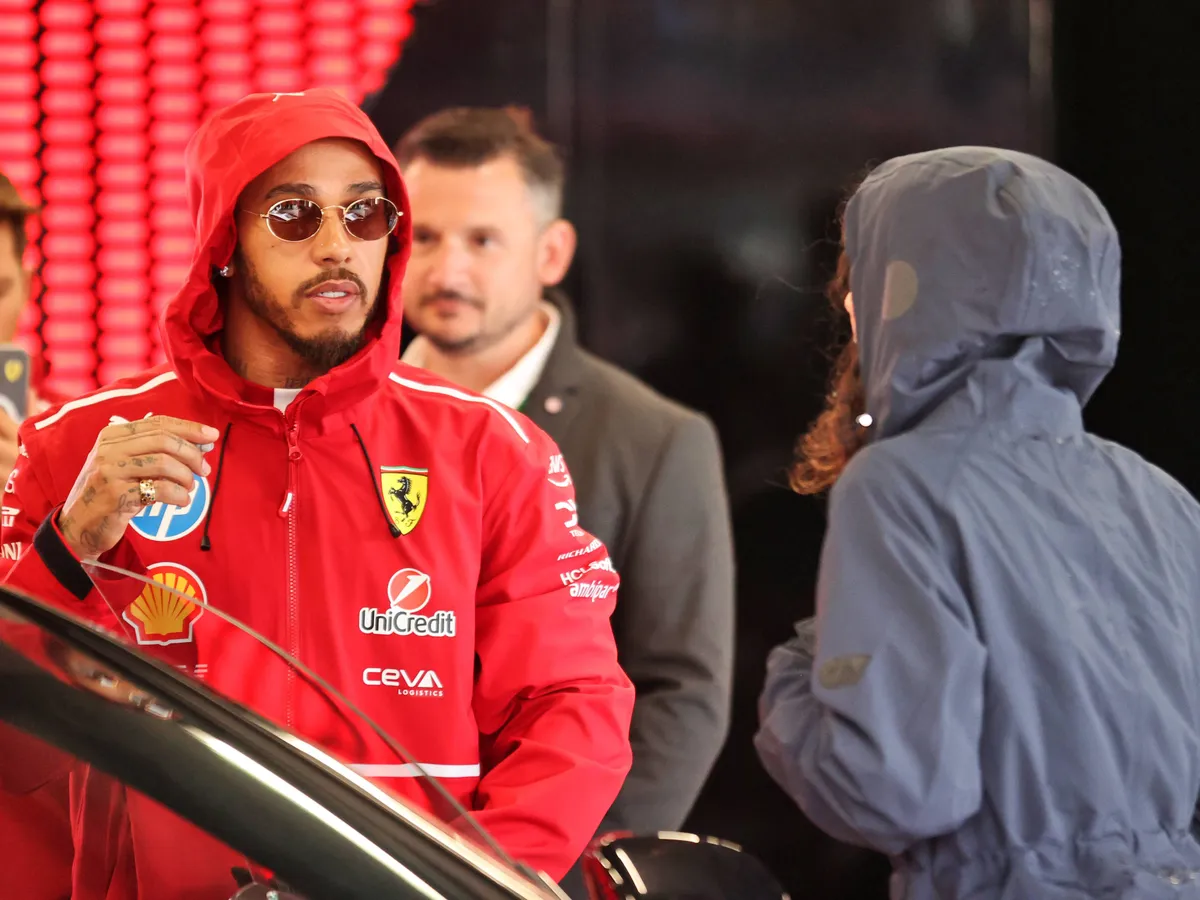
The Car That Fights You Back
In qualifying, Hamilton showed glimpses of the old magic. He was pushing for pole, dancing on the edge of grip, until a final sector mistake pushed him down to fifth. Still, the pace was there. But as Sunday arrived and the rain fell, Ferrari’s true weakness was exposed.
“The tires dropped off massively. The car was unbelievably tricky to drive,” Hamilton said. “Every corner felt like walking a tightrope.” For a man who once made wet weather drives look like ballet, this was a jarring confession. The SF-25, in his words, simply didn’t want to comply. “It’s not a car that likes those conditions.”
But rather than wallow in frustration, Hamilton turned analytical. “Ultimately, I learned a lot today. It’s only my second time driving this car in the wet,” he said. “But it’s so hard… next year’s car needs more than tweaks.”
Let that settle: the man Ferrari fought to sign, their headline star, was not asking for setup changes. He was calling for a design revolution.
A Growing Rift in Maranello
His words revealed more than technical dissatisfaction—they exposed a philosophical divide. Hamilton is a driven, feedback-heavy driver. And right now, the message is clear: the SF-25 doesn’t just lack consistency—it lacks identity.
What makes the situation more alarming is what was happening off the track. Ferrari’s team principal Fred Vasseur revealed a stunning operational failure: they had lost GPS data on Hamilton’s car for the entire race. “We were completely blind. Didn’t know where the car was,” he admitted. That means pit calls, tire windows, stint lengths—all of it was guesswork.
In modern F1, that’s not a disadvantage—it’s a death sentence. And it was one Hamilton bore with gritted teeth.
At one point, a pit stop was called one lap too early, costing Hamilton nearly five seconds. In a race that hinged on split-second timing and tire strategy, that margin was terminal. Nico Hülkenberg—starting from the back—got the podium. Hamilton? Left to explain another fourth place.
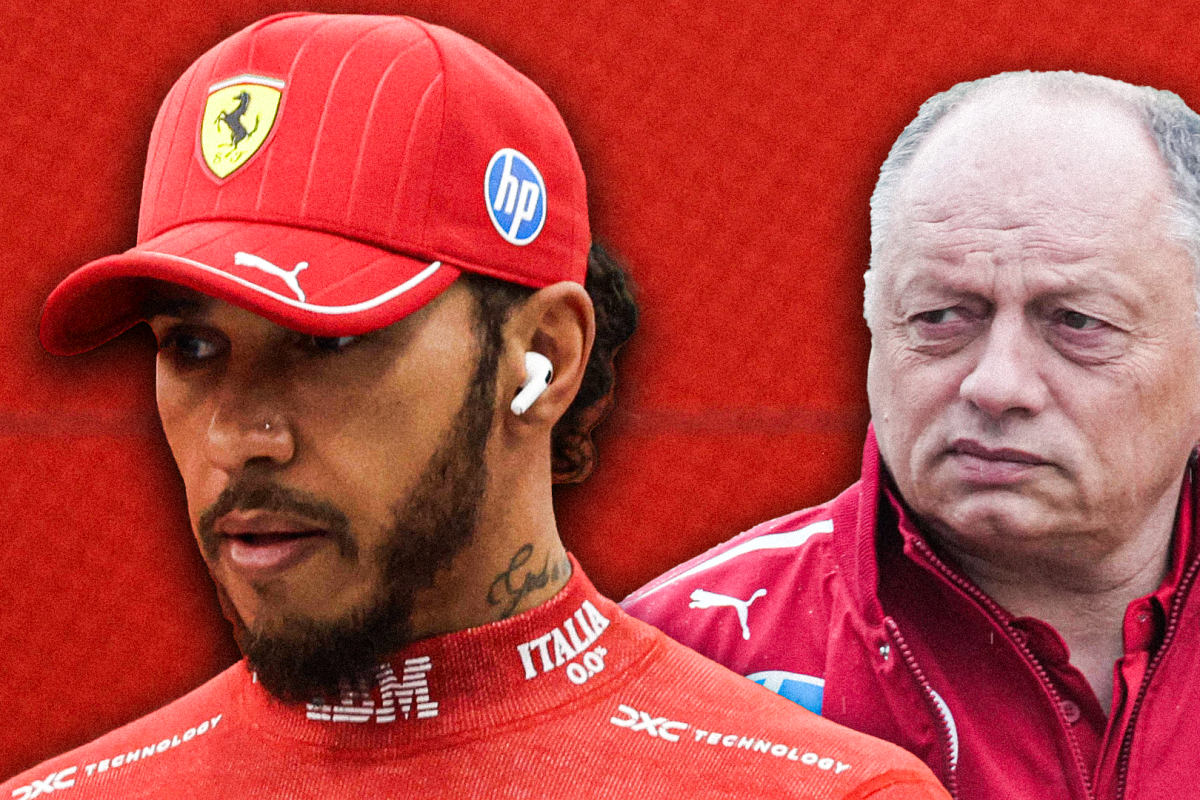
Ferrari’s Diva Dilemma
Fred Vasseur didn’t hide from the truth: the SF-25 is a “snappy” machine. Its window of performance is narrow. McLaren, he noted, has figured out the consistency game. Ferrari hasn’t. “As soon as you’re a bit off with tire pressure or timing, you struggle massively.”
Hamilton doesn’t want a diva. He wants a fighter. He doesn’t need the fastest car over one lap—he needs a car that doesn’t collapse under pressure. His message was clear: “Elements of this car cannot go into next year’s car. Not just performance. Philosophy.”
That word—philosophy—is crucial. Hamilton is fighting for more than podiums. He’s fighting for a culture shift inside Ferrari. And that fight, it seems, is only just beginning.
Between Fire and Frustration
Even as he processed the chaos, Hamilton was reflective. “Even then, you saw—I went wide. Lots of mistakes. But not from me, from the car. It’s like firefighting every lap.”
It’s no wonder his patience is wearing thin. At 39, Hamilton didn’t sign with Ferrari to fade into midfield mediocrity. He came for legacy, for transformation, for one last shot at history. And Silverstone was a brutal reminder that history doesn’t come easy in red.
Hamilton’s honesty is piercing. “A car that turns at low speed, a more stable car,” he said bluntly when asked what he wants for the rest of the season. That’s not wishful thinking—that’s the blueprint. And Ferrari must listen.
Because this isn’t just a driver airing grievances. This is a world champion throwing a lifeline. “I might have to sit down with the people designing next year’s car,” he said. For a team that has often guarded its engineering walls from driver interference, that’s a challenge they can’t afford to ignore.
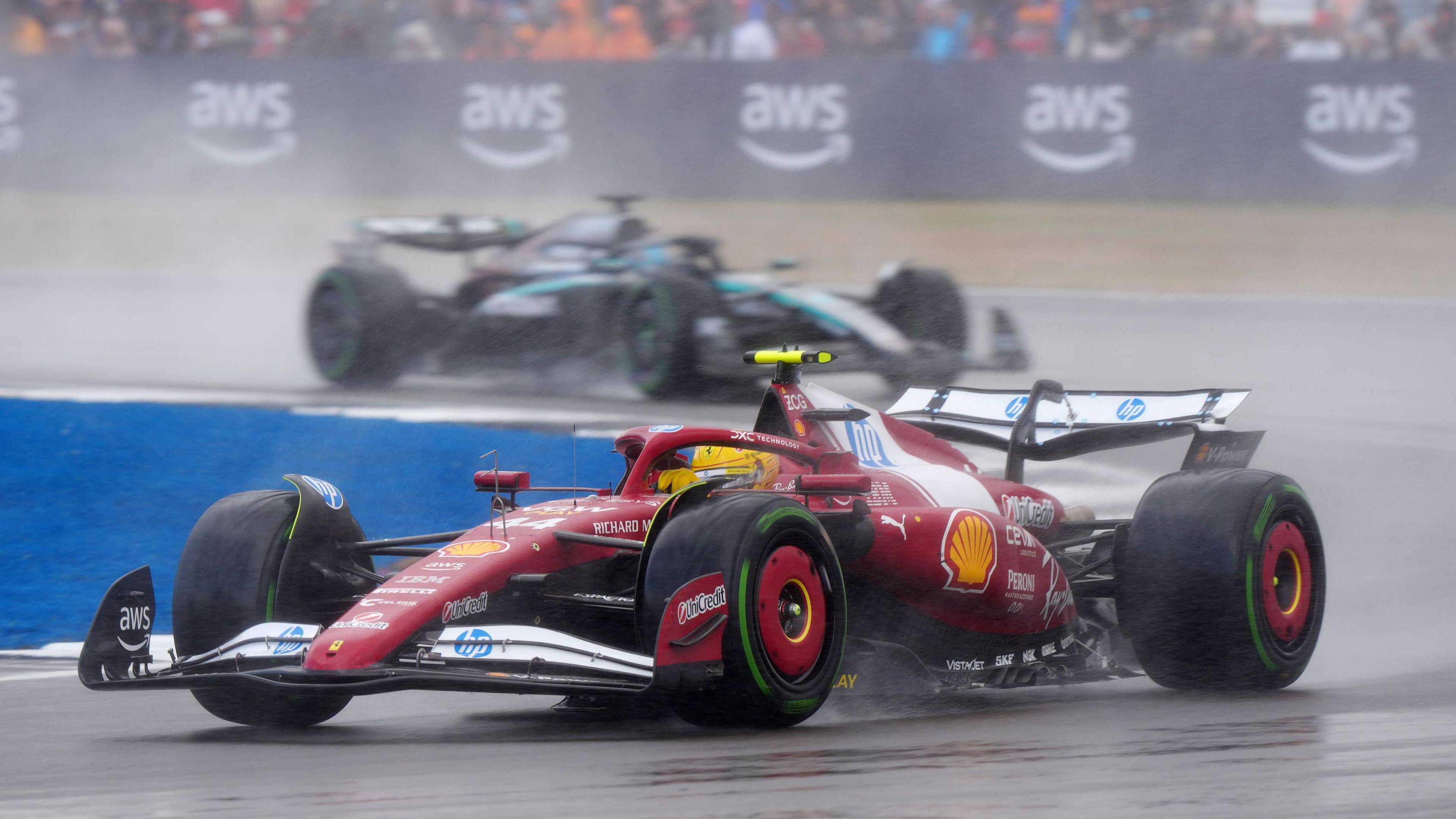
The Bigger Picture
Twelve rounds into the season, Hamilton sits sixth in the standings, just 16 points adrift. Ferrari is second in the constructors’ championship—not because they’re dominant, but because others have faltered. This isn’t triumph—it’s survival.
And yet, Hamilton has delivered. Through chaos, through GPS failures, through inconsistent machinery, he has pulled points from the fire. The question now is: can Ferrari evolve in time?
The next race at Spa looms, a track infamous for its weather. If the SF-25 fails again in the rain, the criticism won’t be subtle. It will be deafening.
Because behind all the diplomacy, behind the quotes and strategy calls, lies one truth: Hamilton didn’t come to Ferrari to settle. He came to rewrite the story. But that only happens if Maranello has the courage to admit what he already knows.
This car is fast, yes—but it’s fast only when conditions are perfect. When chaos strikes, it folds. Hamilton doesn’t want perfect. He wants resilience.
And that may be Ferrari’s greatest test yet. Not whether they can build a fast car—but whether they can build one brave enough to win with him.
So what now?
The storm is here. The spotlight is burning. And Lewis Hamilton, drenched in rain and clarity, is sounding the alarm. The question isn’t whether Ferrari will hear him. It’s whether they’ll change before it’s too late.
Full Video:



